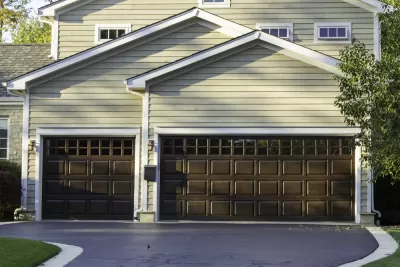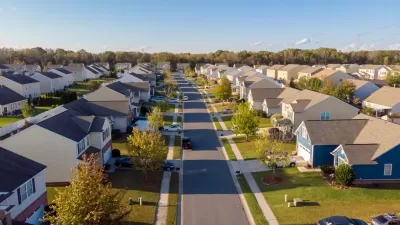As people perform more daily functions at home, homeowners and renters are seeking larger footprints to accommodate a broader range of uses.

Paul Bergeron reports that single-family homes in the U.S. are growing in size, "in part because of homeowners’ desire for more space in response to the virus crisis and the opportunity (or necessity) for working from home."
Median floor area grew between the first and third quarters of this year, and industry experts expect the figure to continue growing as people find themselves doing more of their routine tasks—work, school, entertainment—at home. Meanwhile, rental properties continue to see high demand as many potential homebuyers are priced out of the market. For many renters, Bergeron writes, expanded storage is an increasingly important preference.
According to a separate article by Tyler Wilkins, build-to-rent homes, particularly in suburban areas, are growing in popularity and attracting powerful investors as many households decide to opt for the flexibility, convenience, and lower monthly costs of rental homes. But some city officials fear that investors will buy up rental homes and charge excessively high rents, prompting some localities to issue a moratorium on new rental subdivisions. While the model holds the potential for predatory landlords, housing advocates argue that single-family rental homes fill a gap in an increasingly volatile housing market.
FULL STORY: Single-Family Home Sizes Have Been Trending Larger This Year

Planetizen Federal Action Tracker
A weekly monitor of how Trump’s orders and actions are impacting planners and planning in America.

Map: Where Senate Republicans Want to Sell Your Public Lands
For public land advocates, the Senate Republicans’ proposal to sell millions of acres of public land in the West is “the biggest fight of their careers.”

Restaurant Patios Were a Pandemic Win — Why Were They so Hard to Keep?
Social distancing requirements and changes in travel patterns prompted cities to pilot new uses for street and sidewalk space. Then it got complicated.

Albuquerque Route 66 Motels Become Affordable Housing
A $4 million city fund is incentivizing developers to breathe new life into derelict midcentury motels.

DC Area County Eliminates Bus Fares
Montgomery County joins a growing trend of making transit free.

Platform Pilsner: Vancouver Transit Agency Releases... a Beer?
TransLink will receive a portion of every sale of the four-pack.
Urban Design for Planners 1: Software Tools
This six-course series explores essential urban design concepts using open source software and equips planners with the tools they need to participate fully in the urban design process.
Planning for Universal Design
Learn the tools for implementing Universal Design in planning regulations.
Heyer Gruel & Associates PA
JM Goldson LLC
Custer County Colorado
City of Camden Redevelopment Agency
City of Astoria
Transportation Research & Education Center (TREC) at Portland State University
Camden Redevelopment Agency
City of Claremont
Municipality of Princeton (NJ)





























